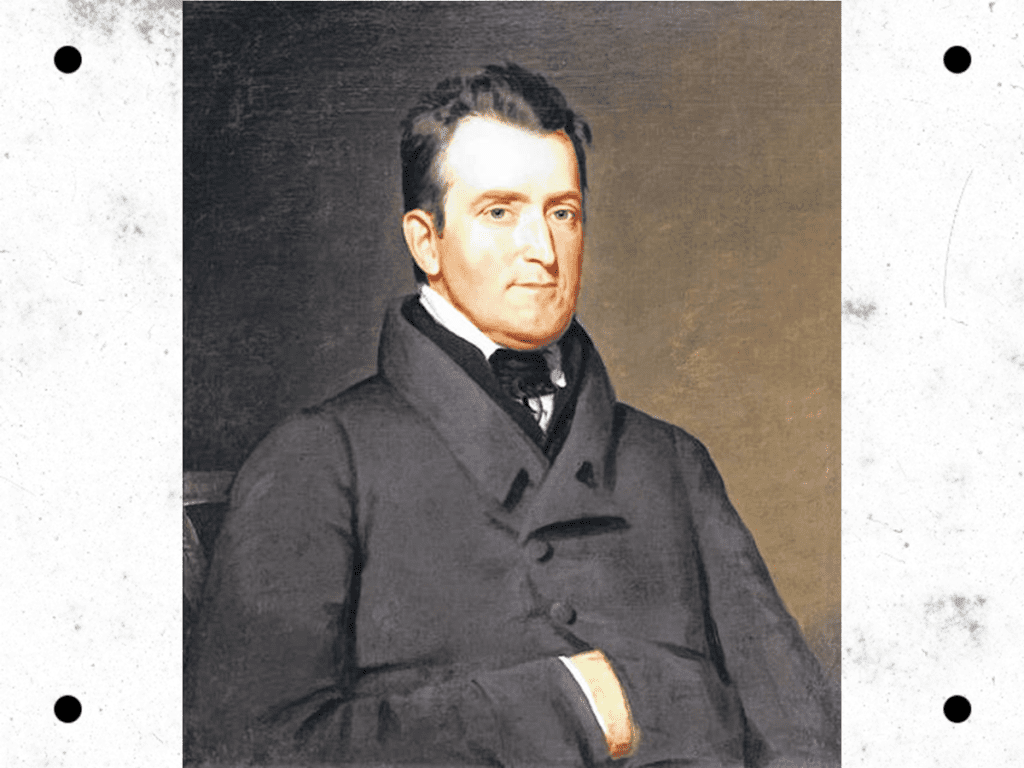Col. John Johnston was born in County Fermanagh, Ireland on March 25, 1775. He immigrated to America at the young age of 11, traveling with an Anglican priest until the remainder of his family arrived five years later, settling in Pennsylvania. At the age of 16, he began traveling as a wagoner with General Anthony Wayne’s legion across the frontier. It was on one of his trips that Johnston encountered the Upper Piqua region of Ohio near the Great Miami River and fell in love with the land that is currently located in Miami County. Roughly ten years later, he met a young quaker named Rachel Robinson, also from Pennsylvania. The two fell in love and eloped despite her parents’ wishes on July 15, 1802, afterwards traveling to Fort Wayne, Indiana.
While at Fort Wayne, Johnston served as an Indian Factor for the U.S. Government to be an intermediary between settlers and native Americans. After his first child was born in 1803, Johnston decided he would purchase the land in Ohio that caught his eye just a few years prior. Over the next several years, Johnston operated a trading post while serving as a Federal Indian Agent for the Indiana Territory. In 1811, he moved his wife and five children to Ohio and his piece of heaven nestled between Loramie Creek and the Great Miami River to become a “gentleman farmer.”
After the War of 1812 broke out, Ohio was in need of an agent who could intercede with the Indians but also who had military experience. John Johnston was perfect for the task, becoming an agent first to the Shawnee tribes, then later the Wyandot, Seneca, Lenape, and Delaware that traversed this region of Ohio. His role was vital during the war, keeping many of the settlers and native tribes at peace with each other. The Upper Piqua Agency serviced nearby settlements in the region, including the newly formed Shelby County until 1829, when a change in presidency caused Johnston to be terminated from his position and forced into early retirement. While he was no longer an official agent, many of the Native Americans in the area trusted Johnston still and came to his residence for aid and company.
John Johnston also played a large role in shaping the future economics for the region by being a part of the Canal Commission in 1825 to help choose the route for the proposed Miami and Erie Canal. He and his wife were also instrumental in establishing the first Methodist Church in Miami County as well as the first Sunday school. Johnston also served positions at different educational organizations across the state and country, such as Miami University, Kenyon College, and West Point Military Academy. While living near Piqua, Johnston and his wife Rachel had ten more children, with fourteen of the fifteen surviving to adulthood.
After Rachel’s death in 1840, Johnston left his home to move to Cincinnati, where he lived with his daughter nearly ten years before her untimely passing. He then moved to Dayton to live with another daughter where he remained for the majority of the rest of his life. Col. John Johnston had reached the impressive age of 86 when he unexpectedly passed away in February of 1861 while traveling to Washington D.C. on official business to negotiate for reimbursement of supplies expended while helping negotiate the Treaty of Upper Sandusky. His legacy remains, however, in the form of the Johnston Farm and Indian Agency historical site just north of Piqua.
